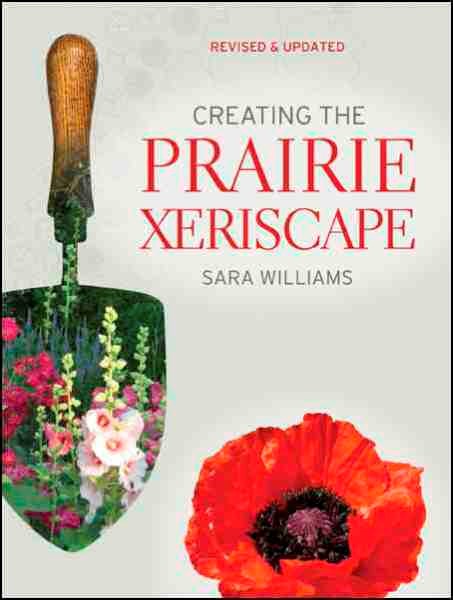It is often difficult for Prairie horticulturists to find information specific for our growing conditions here on the Prairies - i.e. short growing season, harsh winters and low rainfall. Frustration ensues when we read about perennials that are "perennial" anywhere it seems but here. Once again Sara Williams, in her updated and revised edition of Creating the Prairie Xeriscape, has provided us with excellent, quality information on growing a wide range of ornamental plants with water conservation in mind.
For those of you who had the first edition of Creating the Prairie Xeriscape from 1997, this new edition is a complete update. Each page is packed with relevant, current information that only someone with Sara's experience could provide. Highlighted margins on each page often consist of beautiful colour photographs and useful interesting tips. This combination of colour and succinct content bring the book to life with easy readability - a refreshing change for those of us who are often discouraged by the pages and pages of useful (but dry) information found in other gardening manuals. For easy reference, extensive tables at the back of the book list over 300 plants recommended for low water landscapes.
As one might expect, a significant section of the book is devoted to plant recommendations specifically for the Prairies and suitable for low water availability (i.e. drought tolerant). Grasses, trees, shrubs, perennials and annuals are all listed by common and Latin names. Each plant listing has an excellent colour photograph associated with it as well as description, hardiness, origin and, where known, which Canadian 'plant hunter' introduced it to the Prairies. Did you know that the Ussurian pear (Pyrus ussuriensis) originated from trees "grown from seed by the famous British plant collector Ernest H. Wilson and introduced into Canada via Skinner's Nursery of Manitoba via the Arnold Arboretum in 1918?"
The first part of the book has an extensive section on general landscaping principles as well as designing specific areas for specific purposes. Several examples of practical landscape designs are provided. How many books do you know of that provide a landscaping plan for an older farmyard?
An overview on the importance of good soil and its components provide excellent information for the inexperienced gardener as well as a refresher for those of us who have been gardening for a while.
Few plants survive without some water during the growing season. A section on designing water efficient landscapes, saving rainwater and water-saving irrigation systems recognizes the need to supplement what falls from the sky. Facts like "a mature silver maple is estimated to use 220L (of water) per hour during a warm sunny summer day" gave me a whole new perspective on how much water plants really need for successful growth.
A brief discussion on the advantages and disadvantages of using plastic and organic mulches provides concise information for gardeners considering these alternatives for water conservation.
If you decide to create a xeriscape landscape, you may be surprised to know that a lawn can be part of that plan. Sara's suggestions for a small, strategic lawn area or lawns seeded with drought resistant grass cultivars provide hope for the diehard lawn zealots.
Professional or amateur, experienced or new: every gardener should have Creating the Prairie Xeriscape (Coteau Books) in their personal library. Available at most book stores and garden centres.
Bantle is a horticulturist in the Dept. of Plant Sciences at the University of Saskatchewan.
- This column is provided courtesy of the Saskatchewan Perennial Society (www.saskperennial.ca; email: [email protected]).
Announcements:
Fruit Program, Dept. of Plant Sciences, U of S is holding their annual plant sale on Friday, June 7, 9 a.m. - 2 p.m. Check www.fruit.usask.ca for location, plant availability and prices.
Gardenline is open for the season. Call 306-966-5865 (long-distance charges apply) Monday to Thursday. Or send your questions to [email protected]




